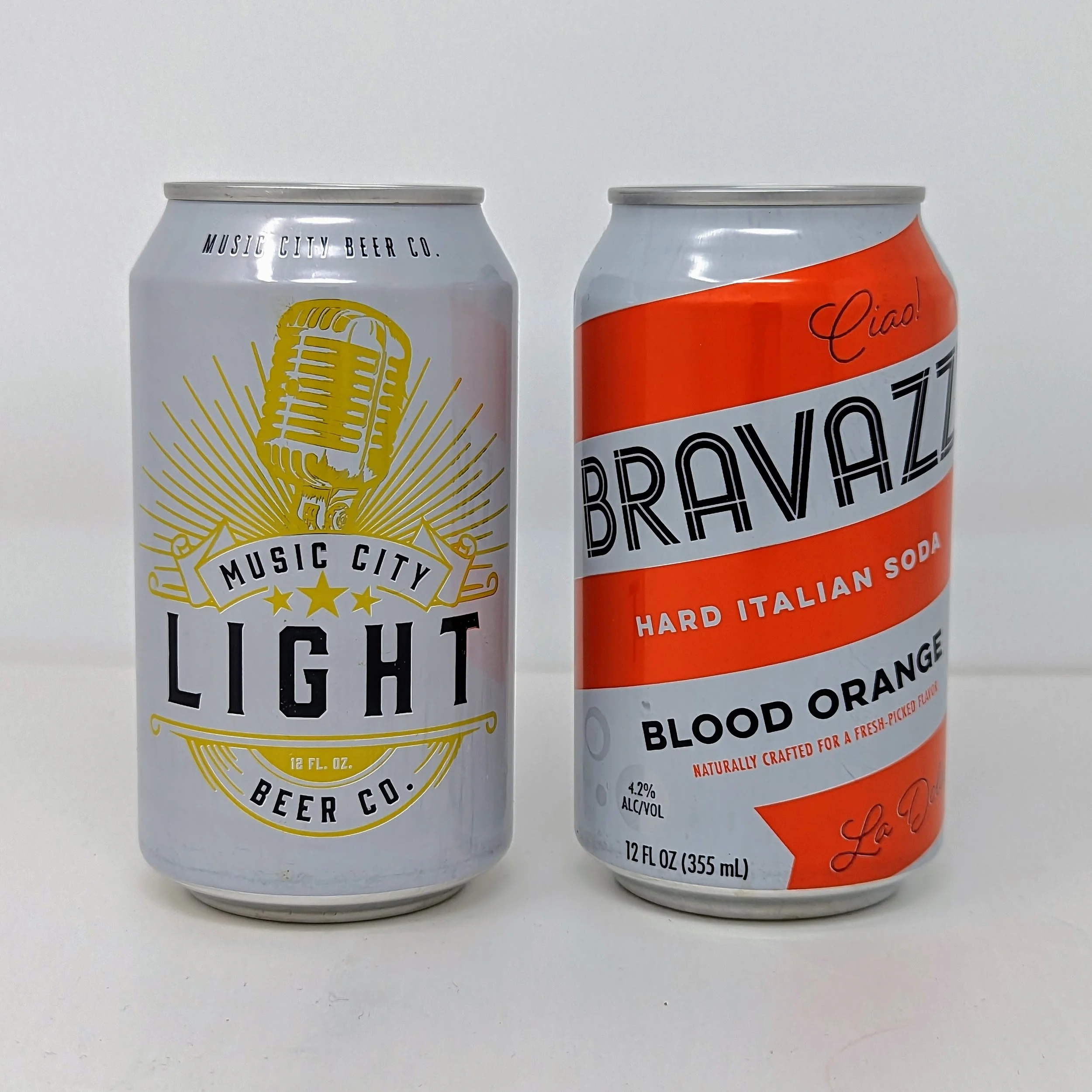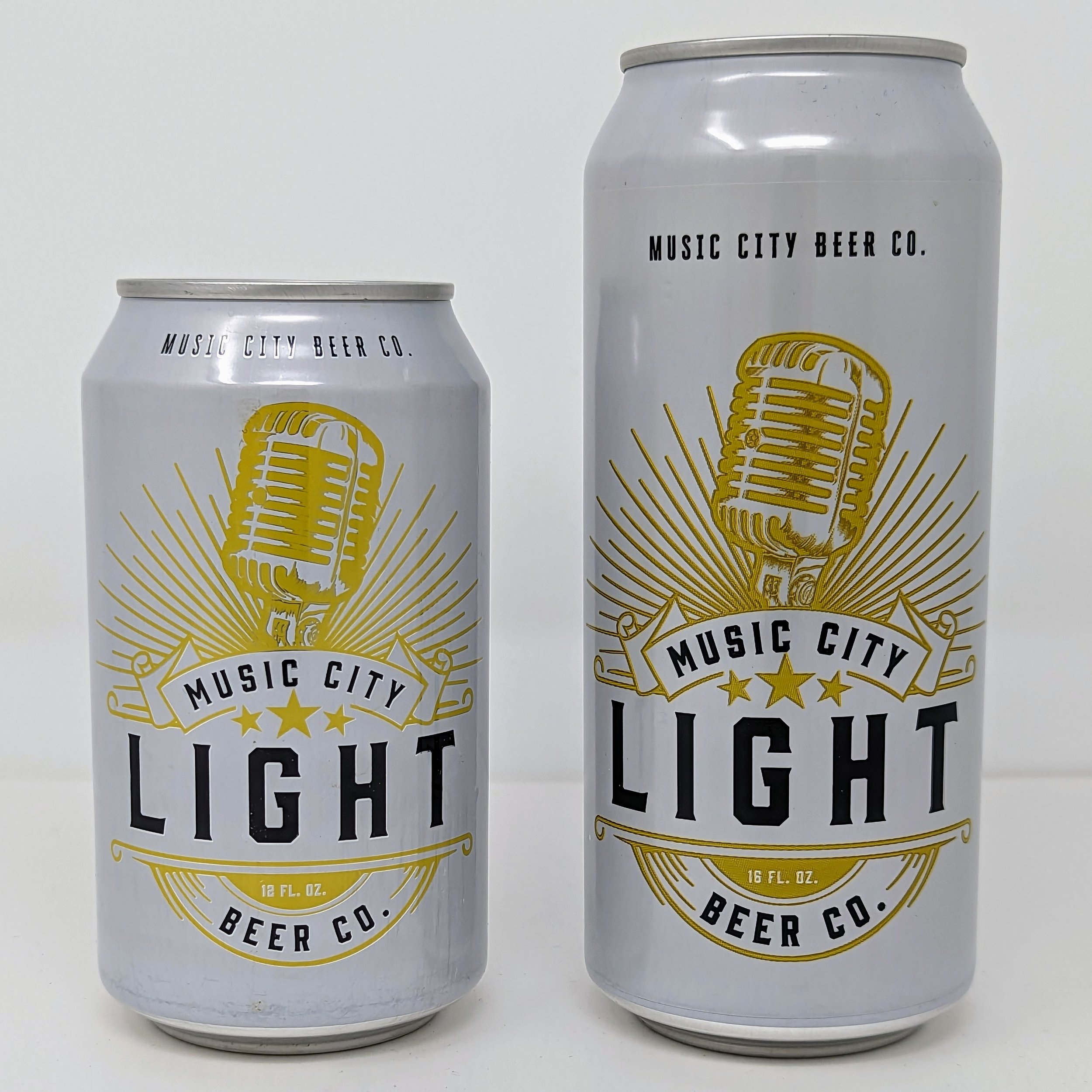Co-packing Resources:
Packaging in Cans
The Nations offers aluminum beverage cans for primary packaging of your beer, seltzer, or non-alcoholic product. One important decision for your brand is what type of printing you will use.
There are four main options to choose from. In this post, we will compare the benefits and drawbacks of traditional printed beverage cans, shrink wrapped cans, digitally printed cans, and applying labels to blank cans.
Traditional Offset Print
Beverage cans have traditionally been manufactured at high volumes using a silkscreen process. Because of the complexity, can manufacturers will impose a proof and setup charge of several thousand dollars for each can design that you want to print. We generally use cans from Crown Packaging, but we can successfully run cans from other major manufacturers, such as Ball or Ardagh.
Print quality is very good, though not allowing as much fine detail as some other options. The ink used will bleed slightly before it dries and color registration is rarely perfect, both of which must be compensated for in the design and during the proof process. You can see the effect of this compensation on the Music City Light can shown here: slight bands of unprinted silver appear around the black letters and other elements. Your design is also limited to six colors because of the production process.
Upon approval of your design and color proofs, you can order cans in full truckload quantities. For standard 12 oz cans, this is 204,225 pieces, which is a significant investment in inventory, but appropriate if you are running thousands of cases per month.
This is by far the lowest cost per can compared to the other options because there is no secondary material or processing step as with the other options below.
Shrink Wrap Cans
Shrink wrap cans have a printed plastic sleeve applied and shrunk onto a blank can body in a heat tunnel. Minimum order quantities are about 7,000 pieces for 12 oz cans, at 2-2.5x the unit cost of traditional printed cans.
Shrink sleeve cans look very glossy and professional, though colors can be somewhat muted in our experience. Some suppliers offer a matte finish as well. The print quality of graphics and text is crisp. Minor distortion may occur on the shoulder of the can due to asymmetric shrinking.
The biggest disadvantage, in our opinion, is the loss rate between manufacturing and filling, due to cans damaged in transit and due to shrink sleeves that are misapplied by the automated equipment. On the “Two Piece” can shown here, you can see the shrink sleeve was not applied correctly, making this can unfit to use.
Digital Print Cans
Digital printing on cans is a fairly new technology that allows high resolution printing on cans, including printing of photographic imagery.
One of the most interesting features of this process is that varnish is applied with the same print head as the ink, allowing you to mix glossy and matte areas in a design, which is not an option with the other printing methods above. However, be aware that the print can have a blur or scattering effect above the can shoulder, where the print head cannot be directly next to the aluminum.
Digital print cans look great, but they are by far the highest cost per unit at 3x or even higher compared to traditional prints. Minimum order quantities are usually one pallet.
These images show some of the options—and potential issues—with using digital prints. The paint drips have a spot varnish effect, with a matte finish everywhere else on the can. On the shoulder of the green can, you can see a scattering effect where the digital printhead, similar to an inkjet printer, is working at a distance.
The cans shown here are print samples from our preferred manufacturer. The Nations does not have any affiliation with these particular brands.
Printed Labels
Perhaps the most common option used by small breweries and short contract runs, a printed adhesive label can be applied to the can after the filling process. You will usually recognize this in the market because the silver of a blank can shows above the label and at the seam where the label meets on the back of the can.
At The Nations, we purchase truckload quantities of cans that are printed as pure white. As long as a design uses a white background, this allows us to apply a thin, clear label which is very hard for a casual observer to detect.
Depending on the quantity of labels ordered, this option is comparable or slightly cheaper than a shrink sleeve can, at 1.5-2.5x the cost of a printed can. We highly recommend using clear or white BOPP for your label material, as it is inherently waterproof and durable. Labels are the only option in this list that aren’t shipped with the can body itself, so be sure to budget for a blank can body and ask if your co-packer can supply the cans from their inventory.
BOPP, or biaxially-oriented polypropylene, is a waterproof and durable material ideal for beverage can labels.
The following images show a printed can (12 oz on the left) and a white can with a clear label (16 oz on the right), to show that the label is nearly indistinguishable.
In the close-up image, you can just barely see the edge of the clear label above the “Music City Beer Co.” text. You can also see dithering dots on the microphone, as this particular label was a CMYK digital print.
Conclusion
The choice of can printing process is up to you and will be driven by your production quantity, your budget and design choices. As your brand scales up, you will likely move to printed cans, which can reduce your total cost by several dollars per case. At any production level though, The Nations is here to help our customers make a choice, select a vendor, and get a great looking and great tasting product to the market.
Comparison of Can Printing Options:
| Offset Print | Shrink Wrap | Digital Print | Labels | |
|---|---|---|---|---|
| Unit Cost | $ | $$$ | $$$$ | $$-$$$ |
| Min Order Quantity | 200,000+ | 7,000+ | 7,000+ | 2,500+ |
| Print Quality | B+ | A- | A+ | A |
| Lead Time, first order | 12-18 weeks | 4-8 weeks | 4 weeks | 2 weeks |
| Finish Area | Full coverage matte or gloss | Full coverage matte or gloss | Spot gloss available | Typically gloss, matte available |
| Unique Features | Full print coverage with no gap | Full coverage, but with overlap seam | Spot varnish, photographic quality | Metallic foil options, spot or digital color |
| Design Concerns | Spot color only, limited to 6 plates | Avoid text above shoulder and near vertical seam | Scattering effect above can shoulder | Print only on vertical surface, not above the shoulder |





